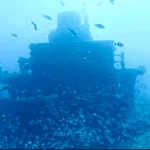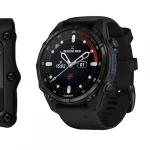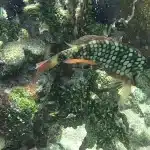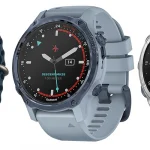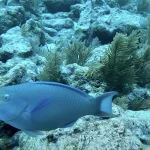Understanding No-Decompression Limits in Key Largo

Table of Contents
- Understanding No-Decompression Limits in Key Largo
- The Science Behind Nitrox and Its Benefits
- How Nitrox Extends Bottom Time by Up to 40%
- Debunking Common Myths About Nitrox Diving
- Maximizing Dive Duration in Key Largo with Nitrox
- Top Mistakes to Avoid When Diving with Nitrox
- Future Trends: The Evolution of Nitrox Use in Diving
- Conclusion: Enhancing Your Key Largo Dive Experience with Nitrox
Introduction
Dive into the vibrant waters of Key Largo, where the use of Nitrox can significantly enhance your underwater experience. Discover how Nitrox extends your bottom time, allowing you to explore the stunning reefs for longer periods. This blog post is designed for scuba enthusiasts eager to maximise their dive adventures with data-driven insights and practical tips.
Understanding No-Decompression Limits in Key Largo
Standard air used in recreational scuba diving consists of approximately 21% oxygen and 79% nitrogen. In contrast, Nitrox blends used in diving, commonly EAN32 and EAN36, have elevated oxygen contents of about 32% to 36% oxygen and consequently reduced nitrogen levels of 64% to 68%. This adjusted gas composition directly influences how much nitrogen is absorbed by a diver’s body during a dive.
| Metric | Standard Air | Nitrox (EAN32/36) |
|---|---|---|
| Oxygen Content | 21% | 32% – 36% |
| Nitrogen Content | 79% | 64% – 68% |
| Maximum Operating Depth (MOD) | Unlimited (with air limits) | Roughly 95 to 110 feet, depending on O₂% |
This composition shift is crucial because nitrogen uptake is the main factor limiting bottom time under no-decompression limits (NDLs). With less nitrogen in the breathing mix, divers absorb less nitrogen, resulting in a smaller inert gas load in their tissues. This directly extends allowable bottom times by delaying the time it takes to reach nitrogen saturation limits that trigger decompression requirements.
Practically, Nitrox enables divers at popular Key Largo dive sites to:
- Extend no-decompression limits by up to 40%, allowing longer exploration of reefs and wrecks without mandatory decompression stops.
- Shorten surface intervals between repetitive dives due to reduced nitrogen buildup, increasing daily dive capacity.
- Reduce nitrogen narcosis risk during intermediate-depth dives, improving clarity, focus, and safety.
For example, a 100-foot dive on air allows approximately 20 minutes of no-decompression bottom time, while using 36% Nitrox can extend this to about 28 minutes — a significant increase that adds to enjoyment and safety. However, divers must also consider oxygen exposure limits with Nitrox, meaning strict adherence to maximum operating depths is essential.
Overall, Nitrox’s enriched oxygen and reduced nitrogen mixture provides measurable advantages over standard air by lowering inert gas absorption, thus extending no-decompression bottom times and enhancing diver safety on the vibrant reefs and wrecks of Key Largo.
The Science Behind Nitrox and Its Benefits
How Nitrox Extends Bottom Time by Up to 40%
One of the most significant advantages of using Nitrox, or Enriched Air Nitrox (EANx), while diving in Key Largo’s vibrant underwater environment is its ability to substantially extend your no-decompression bottom time. Unlike regular air, which contains about 21% oxygen and 79% nitrogen, Nitrox mixtures typically have a higher oxygen content—commonly 32% or 36%—and correspondingly less nitrogen. This alteration reduces the amount of nitrogen your body absorbs during a dive, directly influencing your allowable bottom time.
When you breathe Nitrox, the reduced nitrogen fraction means your tissues saturate more slowly with inert gas. This effectively lowers your body’s nitrogen loading at any given depth, allowing you to remain underwater longer before reaching your no-decompression limit (NDL). For example, at a typical recreational diving depth of 50 feet, using a 36% Nitrox mix can extend your allowable dive time from about 70 minutes on regular air to up to 100 minutes. This 40% increase in bottom time means more opportunity to explore Key Largo’s reefs and wrecks without additional decompression stops.
This benefit is particularly pronounced in popular dive sites around Key Largo like the John Pennekamp Coral Reef or the Spiegel Grove wreck, where divers often seek extended bottom times to fully experience the abundant marine life and complex structures.
Here’s why Nitrox achieves this:
- Reduced Nitrogen Uptake: Lower nitrogen concentration in your breathing gas means less nitrogen dissolves into your bloodstream and tissues, delaying the onset of nitrogen saturation limits.
- Extended No-Decompression Limits: Because your tissues absorb less nitrogen, NDLs are pushed further, permitting longer dives at the same depth before mandatory decompression is required.
- Lower Post-Dive Fatigue: Although not directly lengthening bottom time, reduced nitrogen uptake can lead to less residual nitrogen in your system, often resulting in reduced fatigue and a more comfortable surface interval.
It’s important to remember that while Nitrox improves bottom time, it also comes with operational considerations. Divers must be aware of maximum operating depths to avoid oxygen toxicity risks, especially at higher oxygen percentages. Always use appropriate dive computers or tables calibrated for Nitrox and analyse your tank’s oxygen content before dives.
In summary, leveraging Nitrox for your Key Largo dives can extend your exploration time underwater by up to 40%, allowing you to maximise your dive experience safely and efficiently while adhering to no-decompression limits.
How Nitrox Extends Bottom Time by Up to 40%
Debunking Common Myths About Nitrox Diving
Despite its popularity among divers, Nitrox diving is often surrounded by misconceptions that can lead to confusion or even unsafe practices. Addressing these myths will help divers visiting Key Largo make informed decisions and maximise the benefits of Nitrox safely.
1. Nitrox Allows You to Dive Deeper
Myth: Many believe that using Nitrox means you can safely dive deeper than on regular air. Reality: Nitrox actually places a more conservative limit on maximum depth due to oxygen toxicity risks. For example, a common Nitrox mix like 40% oxygen has a maximum operating depth around 25 metres (about 82 feet) to avoid central nervous system (CNS) oxygen toxicity. This is considerably shallower than air dives, which typically have a depth limit of 40 metres (130 feet). Thus, Nitrox restricts depth rather than extends it.
2. Nitrox Makes Diving Completely Safer
Myth: Because Nitrox reduces nitrogen uptake, some assume it eliminates decompression sickness (DCS) risk and makes diving safer overall. Reality: While Nitrox reduces nitrogen load and lowers DCS risk, it introduces a different hazard: oxygen toxicity. Higher oxygen concentrations increase the risk of CNS oxygen toxicity, which can cause convulsions underwater. Thus, Nitrox diving requires balancing the benefits of extended bottom time with strict adherence to depth and exposure limits to stay safe.
3. Nitrox Does Not Require Special Training
Myth: Some divers think Nitrox is just “enriched air” that anyone can use without extra knowledge. Reality: Training and certification are essential before using Nitrox. Divers must learn to analyse oxygen percentages in their tanks, understand maximum operating depths, and manage dive planning with specific oxygen exposure limits. Without this training, divers risk accidental oxygen toxicity or misinterpreting dive computers and gas mixes, which can be dangerous.
4. Nitrox Reduces Air Consumption and Extends Dive Time Simply by Changing the Gas Mix
Myth: Another common misconception is that breathing Nitrox directly lowers air consumption, allowing divers to stay underwater longer simply by using it. Reality: Air consumption depends primarily on physical exertion and depth (ambient pressure), not the oxygen fraction in the gas mix. Nitrox extends bottom time because it lowers nitrogen absorption, allowing for longer no-decompression limits at given depths—not because it conserves air in the tank. At Key Largo dive sites, this distinction is essential for planning longer reef or wreck dives safely.
Practical Tips for Key Largo Divers Using Nitrox
- Always get certified in Nitrox diving before using enriched air mixes.
- Check your Nitrox tank’s actual oxygen percentage and plan your dive within safe depth limits accordingly.
- Use your dive computer’s Nitrox settings or tables based on your exact gas mix to avoid oxygen toxicity.
- Remember that breathing rate and exertion, common during exciting Key Largo exploration, dictate air consumption — not Nitrox itself.
- Respect local regulations and dive shop guidance on Nitrox usage at Key Largo to ensure a safe and enjoyable dive.
Understanding these common myths and their realities ensures that Nitrox divers can make the most of their diving adventures while staying within safe operational boundaries. This knowledge helps Key Largo divers prolong their underwater explorations without compromising safety.
Debunking Common Myths About Nitrox Diving
Maximizing Dive Duration in Key Largo with Nitrox
When planning dives in Key Largo, understanding how Nitrox impacts real-world bottom times at various popular dive sites is crucial to making the most of your underwater experience. Comparing typical dive durations with and without Nitrox reveals significant advantages, especially in certain depth ranges common to the area.
Shallow Reef Dives (20–35 feet)
These shallower reef sites, such as Molasses Reef and French Reef, generally allow longer bottom times regardless of breathing gas due to lower nitrogen absorption rates. Typical air dives at these depths last between 45 and 60 minutes. With Nitrox, divers often enjoy 60 minutes or more underwater, effectively reaching the full hour dive many operators advertise. The benefit of Nitrox here is more about maximising that full hour comfortably rather than dramatically increasing time. Conditions like currents and individual air consumption may still limit actual dive duration.
Deep Reef and Drift Dives (60–90 feet)
At deeper sites like Carysfort Reef, dive times become more constrained by nitrogen limits. On air, no-decompression limits generally restrict dives to 30–45 minutes. Using Nitrox, particularly mixes around 32–36% oxygen, can extend these bottom times by roughly 15 to 20 minutes, allowing 45–60 minutes of safe dive time. This additional time enables divers to more thoroughly explore the reef’s complex topography and marine life. Additionally, Nitrox reduces nitrogen buildup, allowing for shorter surface intervals before repetitive dives, increasing overall daily dive efficiency.
Deep Wreck Dives (100–140 feet)
Deep wrecks such as the USS Spiegel Grove (about 75–100 feet) and the USCG Bibb (over 110 feet) pose more significant depth challenges. On standard air, these depths often exceed recreational no-decompression limits, making extended bottom time unsafe or technically demanding. Nitrox use here allows dives from 25 to 40 minutes within no-decompression limits, as divers must still carefully manage oxygen exposure limits and potential decompression obligations. For example, dives on the Bibb wreck require conservative profiles even with Nitrox, often limiting bottom time to about 30 minutes to stay safe.
Key Insights for Nitrox Use in Key Largo
- Nitrox offers the greatest bottom time extension at moderate depths, typically between 60 and 90 feet, where nitrogen loading becomes a limiting factor for air divers.
- Shallow reef dives gain modest additional time but benefit from reduced fatigue and increased safety margins.
- Deep wreck dives remain challenging; Nitrox extends time but do not eliminate the need for careful dive planning and often advanced certification.
- Current conditions, air consumption rates, and diver experience also influence actual dive durations, so planned times are best treated as guidelines rather than guarantees.
Overall, Nitrox is an invaluable tool for Key Largo divers aiming to maximise their no-decompression limits and overall dive time, especially on the diverse reef and wreck sites the area is famous for.
My Favorite Dive Computers
I have compared the 3 top diving computers for each category to help making the right choice easier:
Maximizing Dive Duration in Key Largo with Nitrox
Top Mistakes to Avoid When Diving with Nitrox
Diving with Nitrox can extend your bottom time and improve your diving experience in Key Largo, but it requires strict adherence to certain safety practices. Here are some frequent errors divers make when using Nitrox and solutions to ensure both safety and efficiency on your dives.
- Overestimating Dive Time Extension: While Nitrox increases no-decompression limits by reducing nitrogen absorption, many divers mistakenly believe it significantly extends their actual air supply. For example, a diver consuming air quickly—around 20 litres per minute at 20 metres—might run out of gas in 33 minutes despite longer no-decompression limits. Always account for your personal air consumption and tank size rather than assuming Nitrox equals more bottom time automatically.
- Ignoring Maximum Operating Depth (MOD): Higher oxygen percentages reduce MOD due to oxygen toxicity risk. A 40% oxygen blend has an MOD of about 25 metres (82 feet), which is much shallower than typical air recreational limits. Exceeding your Nitrox MOD risks central nervous system (CNS) oxygen toxicity, which can occur suddenly without warning. Always calculate and respect your gas mix’s MOD before diving.
- Skipping Proper Gas Analysis and Label Checks: Every Nitrox cylinder must be analysed to confirm the oxygen content before diving. Failing to verify tank labels or relying on assumptions jeopardises safety. Look for standard markings such as yellow and green bands on Nitrox tanks and double-check the blend percentage stated on the tank.
- Using Gear Not Rated or Certified for Nitrox: Not all diving equipment is suitable for elevated oxygen levels. Regulators, BCDs, and other gear often require cleaning and certification for Nitrox use to avoid combustion or damage. Verify your equipment is properly rated and maintained specifically for Nitrox before each dive.
- Misjudging the Benefits of Nitrox: Nitrox isn’t a universal solution for longer or safer dives. Its advantages depend heavily on dive profile, depth, air consumption rate, and adherence to safety protocols. Don’t assume that using Nitrox means more dives per day unless you plan carefully and adjust accordingly.
Practical steps to avoid these mistakes include:
- Complete a recognised Nitrox certification course to understand MOD, oxygen toxicity, and dive planning.
- Consistently analyse your gas blend and adhere strictly to the MOD for your Nitrox mix.
- Monitor your air consumption closely and plan dives based on your actual gas availability.
- Use Nitrox-compatible equipment that is serviced and rated for enriched air use.
- Always perform pre-dive safety checks and verify your dive plan with your buddy or instructor.
By avoiding these frequent errors, divers visiting Key Largo can safely maximise the benefits of Nitrox, enjoying longer bottom times within safe no-decompression limits while minimising risks associated with oxygen toxicity and equipment issues.
Top Mistakes to Avoid When Diving with Nitrox
Future Trends: The Evolution of Nitrox Use in Diving
The use of Nitrox in diving is poised for significant evolution driven by technological innovation, data integration, and personalisation. Dive computers and related devices are becoming increasingly sophisticated, enhancing the safety and enjoyment of Nitrox dives in Key Largo and beyond.
Technological Advancements in Dive Computers
Modern Nitrox dive computers are evolving with features that include full-colour OLED displays, intuitive interfaces, and multi-gas support that simplify dive planning. Wireless connectivity allows divers to sync data with smartphones and cloud platforms, facilitating real-time dive monitoring and post-dive analysis. New sensors offer more precise depth, pressure, and oxygen partial pressure measurements, alongside automated altitude corrections that improve safety at various dive sites. These refinements promise more reliable dive profiles and adapted decompression schedules tailored to complex underwater environments.
Integration with Wearables and Smart Devices
The future sees tighter integration between dive systems and everyday smart technology. Divers can expect dive computers interfacing directly with smartwatches and mobile apps to manage gas mixes, log dives automatically, and share profiles socially within diving communities. AI-enhanced algorithms will dynamically adjust decompression stops by factoring in environmental conditions such as temperature and dive depth. These capabilities make Nitrox diving more accessible while boosting safety through heightened real-time situational awareness.
Safety Enhancements and Personalisation
Emerging technologies also focus on personalising dive safety through physiological monitoring. Innovative systems, like those incorporating pulse oximetry and heart rate tracking, help measure individual responses to Nitrox, potentially tailoring no-decompression limits based on real-time physical data. Additionally, some devices employ blood doppler technology post-dive to assess microbubble formation — an advancing frontier in decompression science that could reduce DCS risk by customizing decompression models to each diver’s physiology.
Environmental and Training Benefits
Eco-conscious manufacturing of dive gear using sustainable materials is gaining momentum, reflecting a growing commitment to protect marine ecosystems around Key Largo. For dive professionals and technical divers, future Nitrox technology will offer seamless management of complex gas switches, supporting enhanced training efficiency and multi-gas dive scenarios, with data that can be reviewed and analysed for continuous learning and safety improvements.
These advancements collectively underscore a future where Nitrox diving in Key Largo becomes safer, more personalised, and more connected — empowering divers to maximise bottom times while managing risks with unparalleled precision.
Future Trends: The Evolution of Nitrox Use in Diving
How Nitrox Enhances Your Key Largo Dive Experience
Using Nitrox—also known as Enriched Air Nitrox (EANx)—in Key Largo dives can significantly elevate your underwater adventure by extending your no-decompression limits and improving overall dive quality. This breathing gas mixture contains higher oxygen and reduced nitrogen compared to regular air, which brings numerous practical benefits for divers exploring Key Largo’s vibrant reefs, wrecks, and marine life.
Longer Bottom Times at Popular Dive Spots
The reduced nitrogen absorption when diving with Nitrox means you can spend more time underwater before reaching no-decompression limits. In Key Largo—home to iconic dive sites like the Spiegel Grove shipwreck and John Pennekamp Coral Reef State Park—this extension can be as much as 40%, enabling you to fully explore complex reef structures or shipwreck interiors without rushing your dive. More bottom time translates to enhanced photography opportunities, relaxed exploration, and greater overall satisfaction from each dive.
Reduced Post-Dive Fatigue for Multi-Dive Days
Many divers report feeling less exhausted and experiencing quicker recovery when using Nitrox. This reduction in nitrogen uptake not only lowers decompression stress but also diminishes feelings of tiredness, allowing you to enjoy multiple dives during a day with greater comfort. In a destination like Key Largo, where multi-dive trips and liveaboard excursions are common, this advantage keeps divers energized and alert throughout their adventure.
Increased Safety Margins and Flexibility
Nitrox’s lower nitrogen content provides a valuable safety buffer by decreasing decompression sickness risk, especially beneficial when you undertake repetitive dives or explore deeper reefs. This heightened safety margin offers peace of mind, promotes safer dive planning, and can enable more frequent diving without excessively long surface intervals.
Efficient Surface Intervals and Dive Turnarounds
Thanks to reduced nitrogen loads, Nitrox divers often experience shorter required surface intervals, allowing you to maximise your time immersed rather than waiting to off-gas. This efficiency is especially advantageous during multiple dives per day, making the most of your time in Key Largo’s crystal-clear waters.
Local Nitrox Training and Accessibility
Many dive centres around Key Largo provide accessible Nitrox certification courses that can be added onto existing dive packages or advanced training. These courses teach gas analysis, dive planning, and safe Nitrox use—perfect for divers wanting to enhance their skills and make the most of Key Largo’s dive opportunities.
By incorporating Nitrox into your diving regimen, you gain extended exploration time, enhanced safety, reduced fatigue, and practical benefits that contribute to a richer, more enjoyable experience in Key Largo’s renowned underwater playground.
Conclusion: Enhancing Your Key Largo Dive Experience with Nitrox
Maximizing Bottom Time and Safety with Nitrox Diving in Key Largo
Utilizing Nitrox in Key Largo dives can greatly enhance your underwater experience by extending no-decompression limits, but to gain the full benefit safely, following best practices tailored to the local conditions is essential. Key Largo’s reefs and wreck sites often range around 60 feet, where an enriched air mix containing 34–36% oxygen can allow divers to remain underwater for up to 80 minutes instead of about 56 minutes with regular air. This increase is due to reduced nitrogen absorption, which also helps limit fatigue and lowers the risk of decompression sickness.
Selecting the Right Nitrox Blend
- Match blend to dive depth: Custom Nitrox mixes must suit your planned depth. For most Key Largo dives near 60 feet, 34–36% oxygen blends are ideal.
- Adjust oxygen partial pressure (PO₂): To avoid oxygen toxicity, maintain the PO₂ at or below 1.4 in warm conditions; adjust accordingly if diving deeper or in cooler water.
- Avoid “one-size-fits-all” mixes: For deeper dives beyond 80 feet, use lower oxygen percentages to keep within safe PO₂ limits while still gaining extended bottom time.
Crucial Dive Planning and Safety Measures
- Proper Gas Analysis and Labeling: Always analyse your gas mix before entering the water, and ensure tanks are clearly labeled to confirm oxygen percentages.
- Dive Computer Settings: Program your dive computer with the exact oxygen concentration and maximum operating depth (MOD) to monitor your exposure effectively.
- Air Management: Follow the rule of thirds by allocating one-third of your air for the outbound portion, one-third for the return, and keeping one-third in reserve for emergencies.
Physical and Environmental Awareness
- Manage exertion levels: Avoid rapid ascents or descents and minimise physical strain to reduce nitrogen buildup and control oxygen exposure.
- Maintain physical fitness: Good cardiovascular health enhances your ability to manage currents and emergency scenarios.
- Stay mentally alert: Diving sober and rested helps maintain clear judgment under water.
Training and Certification
Engaging in a certified Enriched Air Nitrox course, widely available in Key Largo dive shops, is strongly recommended. These courses cover critical topics such as:
- Understanding gas partial pressures and equivalent air depths
- Learning emergency responses related to oxygen toxicity
- Proper tank handling, gas labeling, and dive planning specific to Nitrox use
Adhering to these evidence-based guidelines ensures that divers can safely extend their bottom times in Key Largo’s vibrant underwater ecosystems while minimising risks associated with enriched air mixtures and decompression limits.
Sources
- Divers Direct – Nitrox vs Normal Air Composition
- PADI Blog – The Benefits of Diving Nitrox Versus Air
- Wikipedia – Nitrox
- Ray Scuba Diving – Diving with Nitrox
- ScubaBoard – Diving Nitrox to Increase Safety and Bottom Time
- DiveLogz – How to Extend Your Bottom Time When Diving
- Dive Subculture – Misconceptions About Nitrox Diving
- Pro Dive International – What You Should Know About Nitrox Diving

